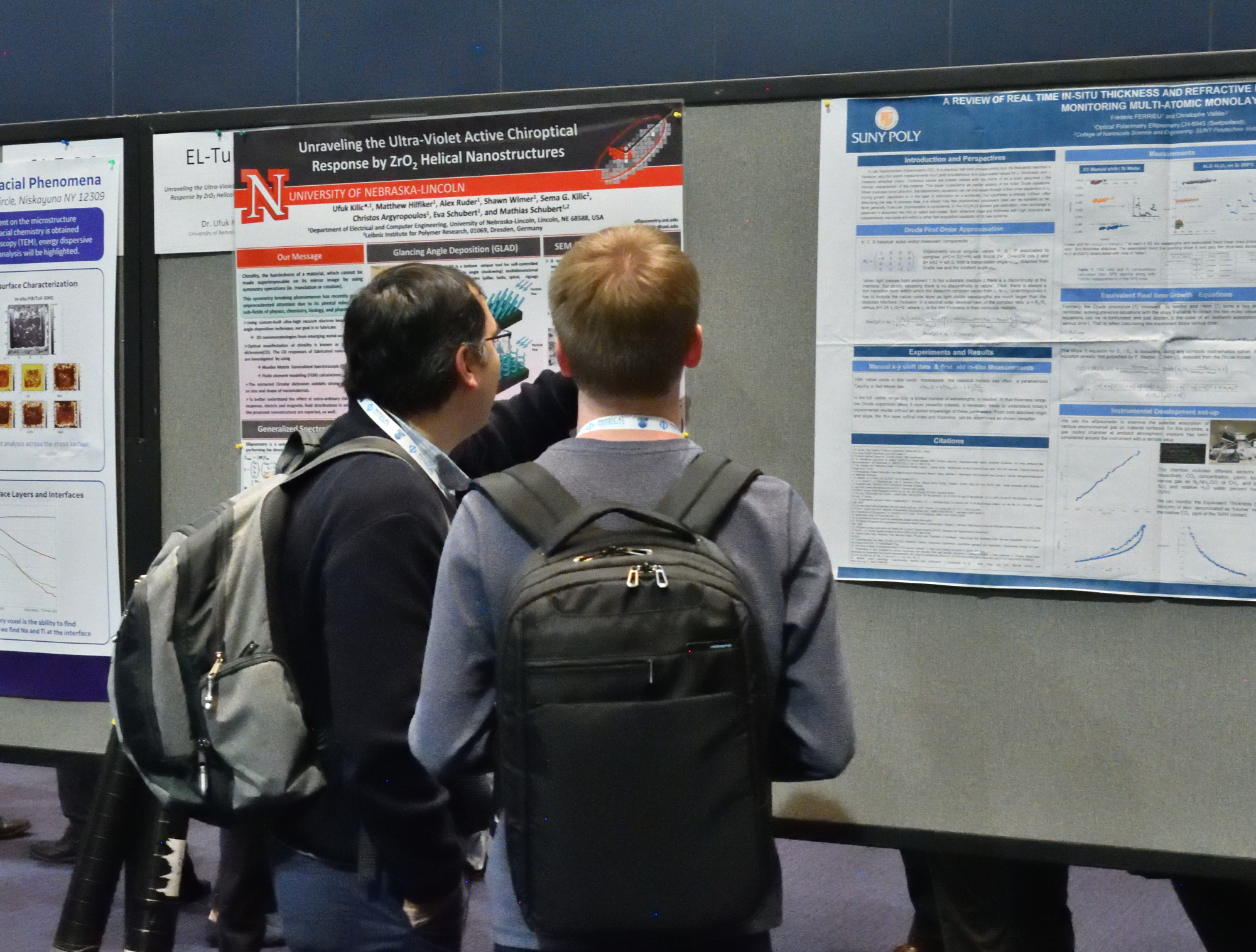DJ-ImageSlider





Millions of Websites are built on Joomla!
Learn more about beautiful blog presentation.

We love Joomla to the moon and back!
Thank you to all volunteers who have contributed!

We proudly present Joomla Version 4!
Learn more about workflows in Joomla.

Real Time In-situ Thickness and Refractive Index Determination when Monitoring Multi-atomic Monolayers .
.
F. FERRIEU1 and C.VALLEE2 .
1Optical Polarimetry Ellipsometry. CH-6945 (Switzerland).
2 SUNY POLY, CNSE, ALBANY (USA).
Abstract: In situ Spectroscopic Ellipsometers (SE), is a precious real time process control tool. As frequently reported in literature, very thin layers measurements don’t yield however simultaneous and uncorrelated values for the thickness tF and the material refractive index (ri). Thickness values are highly related with the choice of an a priori assumed ri which a characteristic of the intrinsic layer’s nature. The paper implements an earlier analysis of the initial Drude equations. We show that when thickness turns ultra-thin then the ellipsometry equations can be solved through a first order expansion in tF. During growth, deposition or in the case of physical adsorption on a substrate, this hypothesis is entirely fulfilled. After describing the simple way to process data, within Atomic Layer Deposition (ALD) examples, it is shown how few physisorbed monolayers case can be handled so far. More general molecular physisorption is also considered. Particularly in the CO2/H2O gas adsorption inter exchange, ellipsometry turns a right method with absorbent like thin or native sub-oxide samples. Both refractive index and thickness with high accuracy are independently reachable and within a rather fast acquisition capability. In vacuum chambers, the stability of alignment is just being done one time and fully optimized. A fixed physical configuration inside vacuum chambers acts with benefit over usual limiting factors. An evident interest appears in atomic layer deposition or etching as well for molecular beam epitaxy and chemical vapor depositions techniques, and sputtering. With today’s “no moving part” or “one single shot” photonic technologies, Spectroscopic Ellipsometers within this configuration can provide sensitivity more than Surface Plasmon Resonance SPR which measures only the optical thickness. With the use of a limited number of wavelengths, SE exist in wide applications fields and furthermore depolarization factor acquisition gives an additional information on the player building accomplishment. Since the pioneer works from H. Arwin, a large opening for bio photonic sensors appears also today. Thin silica interacting with ambient is recognized as specific adsorbents material for gases and proteins detection which is observed here in “native” oxides layers.